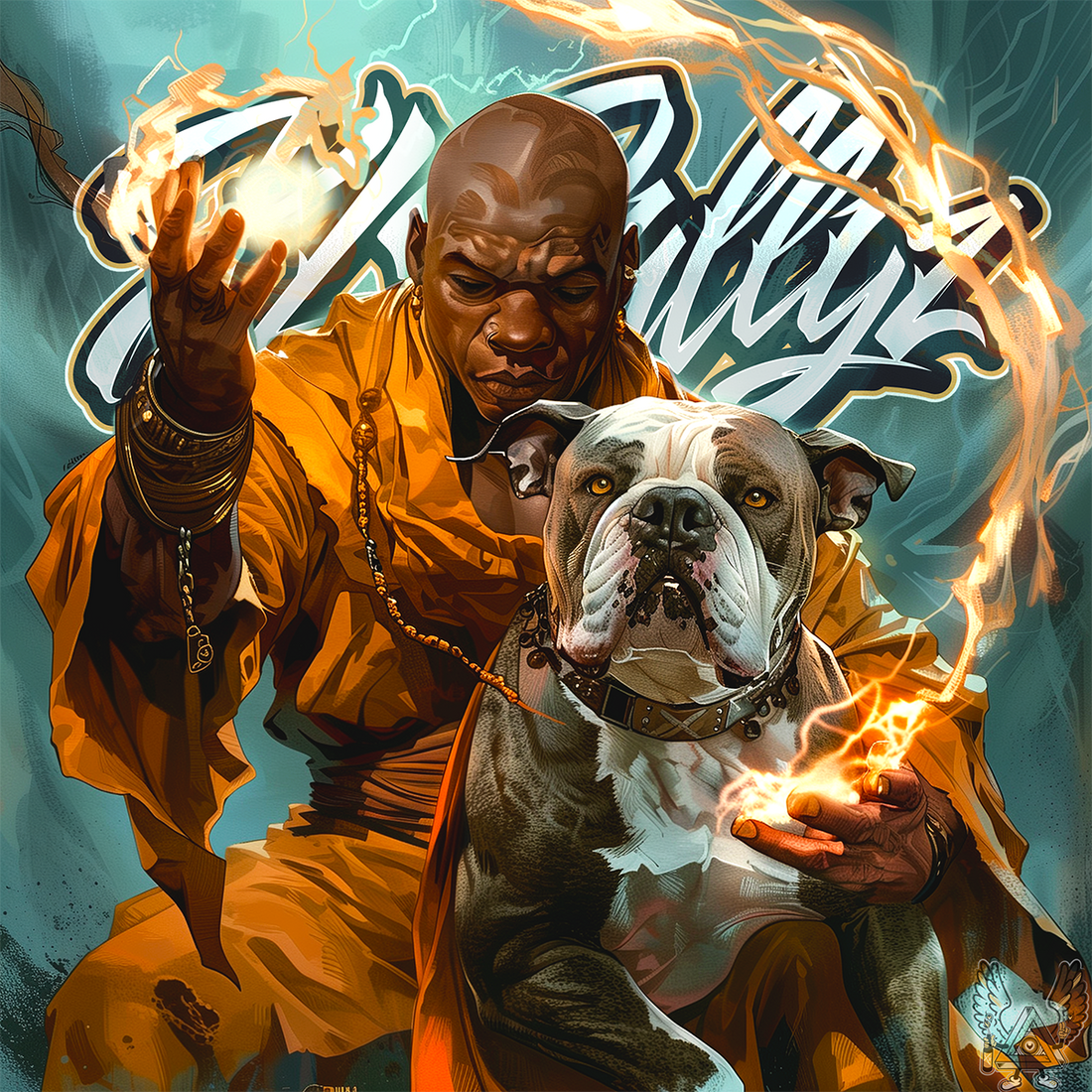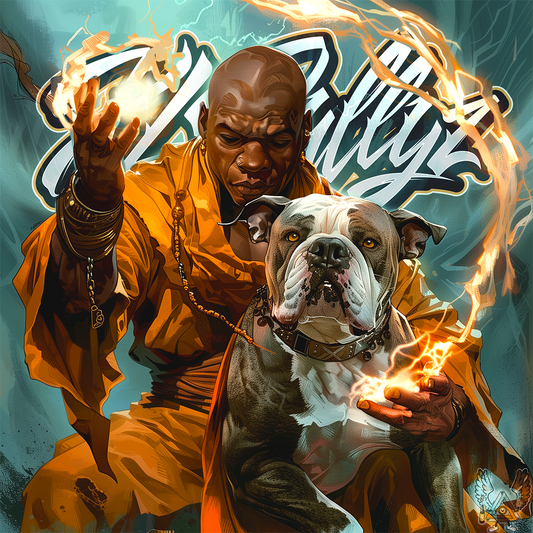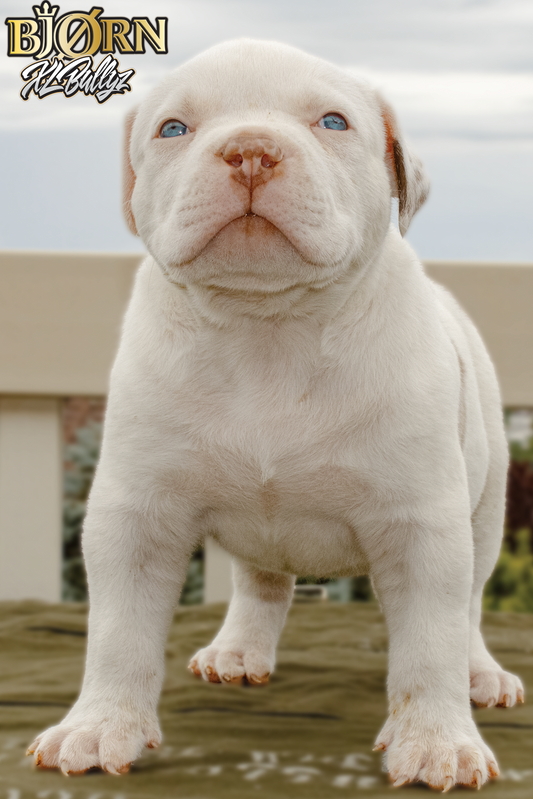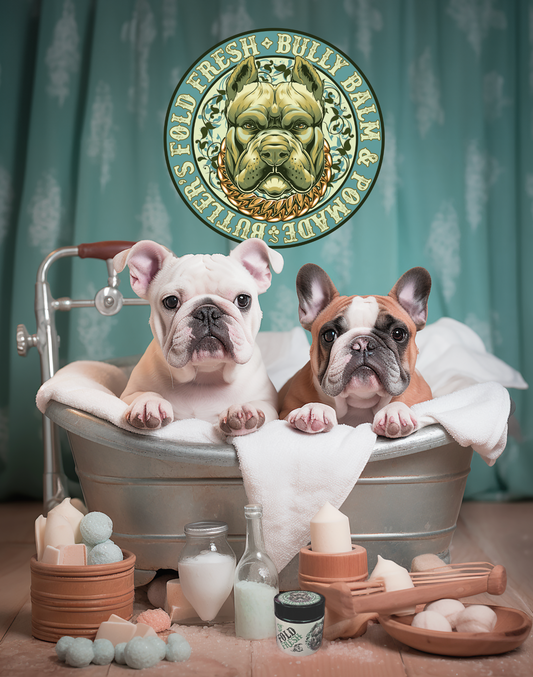
The Creation of the American Bully: A Comprehensive History
Share
Introduction
The American Bully is a breed that embodies strength, agility, and a gentle temperament. It has gained immense popularity due to its distinctive appearance and friendly nature. However, the creation of the American Bully is a fascinating tale of selective breeding, combining various breeds to achieve a perfect balance of physical prowess and amicable disposition. This blog will explore the origins of the American Bully, the breeds involved in its creation, and the formation and significance of the American Bully Kennel Club (ABKC).
Origins and Purpose of the American Bully
The American Bully was developed in the United States in the late 20th century. The primary objective was to create a family-friendly companion dog with a strong, muscular build and a gentle temperament. Breeders sought to combine the best traits of various bully breeds to produce a dog that would be loyal, loving, and suitable for family life.
Breeds Involved in the Creation of the American Bully
The creation of the American Bully involved the careful selection and breeding of several different breeds. Each of these breeds contributed specific characteristics that helped shape the American Bully into the breed we recognize today.
1. American Pit Bull Terrier
The American Pit Bull Terrier played a significant role in the development of the American Bully. Known for its strength, agility, and tenacity, the Pit Bull contributed the muscular build and athletic prowess to the American Bully. Additionally, Pit Bulls are known for their loyalty and affection towards their families, traits that breeders aimed to enhance in the American Bully.
2. American Staffordshire Terrier
The American Staffordshire Terrier, often confused with the Pit Bull, also had a substantial influence on the American Bully. This breed is known for its robust physique, courage, and friendly nature. By incorporating the American Staffordshire Terrier into the breeding program, breeders aimed to enhance the size and build of the American Bully while maintaining a friendly and stable temperament.
3. Bulldog Breeds
Various Bulldog breeds, such as the English Bulldog and the Olde English Bulldogge, were also integral to the development of the American Bully. Bulldogs are known for their stocky build, broad heads, and distinctive appearance. These traits were desirable for the American Bully to achieve the desired look of a strong and muscular yet compact dog.
4. Bull Terrier
The Bull Terrier's contribution to the American Bully was primarily its unique physical characteristics and playful temperament. Known for its egg-shaped head and sturdy build, the Bull Terrier added a distinctive look to the American Bully. Moreover, Bull Terriers are known for their friendly and sociable nature, traits that were essential for the American Bully's intended role as a companion dog.
5. French Bulldog
The French Bulldog, with its charming appearance and affectionate nature, played a role in refining the temperament of the American Bully. French Bulldogs are known for their small size, bat-like ears, and friendly disposition. By incorporating French Bulldog traits, breeders aimed to create a more compact version of the American Bully without sacrificing its muscular build and amiable nature.
Selective Breeding and Establishing the Breed Standard
The process of creating the American Bully involved rigorous selective breeding. Breeders meticulously chose dogs with the desired traits and bred them over multiple generations to establish a consistent breed standard. The goal was to create a dog that not only met the physical criteria but also exhibited a stable and friendly temperament suitable for families.
Key traits that breeders focused on included:
- Muscular Build: The American Bully was bred to have a strong and well-defined muscular structure, reflecting its athletic abilities and strength.
- Distinctive Head: The breed standard emphasized a broad head with pronounced cheek muscles and a strong jawline.
- Compact Size: While maintaining a muscular build, breeders aimed for a more compact size compared to some of the larger bully breeds.
- Friendly Temperament: A key aspect of the American Bully's development was its friendly and affectionate nature, making it an excellent family companion.
- Health and Longevity: Breeders also prioritized the overall health and longevity of the breed, selecting dogs with minimal genetic issues.
Formation of the American Bully Kennel Club (ABKC)
As the American Bully gained popularity and more breeders became involved in its development, there arose a need for a formal organization to oversee the breed's standards and promote responsible breeding practices. This led to the formation of the American Bully Kennel Club (ABKC).
Establishment of the ABKC
The ABKC was officially established in 2004. The primary mission of the ABKC was to provide a unified registry for the American Bully and to ensure that the breed's standards were upheld. The organization aimed to promote responsible breeding, educate the public about the breed, and organize events and shows to showcase the American Bully.
Objectives of the ABKC
The ABKC set out several key objectives to fulfill its mission:
- Breed Standardization: The ABKC developed and maintained a detailed breed standard for the American Bully. This standard outlined the ideal physical characteristics, temperament, and health requirements for the breed.
- Registry Services: The ABKC provided a comprehensive registry service for American Bully breeders and owners. This registry ensured the accurate recording of pedigrees and helped maintain the integrity of the breed.
- Promotion and Education: The ABKC focused on promoting the American Bully as a family companion and educating the public about the breed's positive traits. This included organizing events, publishing educational materials, and engaging with the media.
- Responsible Breeding: One of the core principles of the ABKC was to promote responsible breeding practices. This included encouraging health testing, genetic screening, and ethical breeding methods to ensure the well-being of the breed.
- Community Building: The ABKC aimed to create a supportive community of American Bully enthusiasts, breeders, and owners. This community aspect fostered a sense of belonging and shared responsibility for the breed's future.
Impact of the ABKC on the American Bully Breed
The establishment of the ABKC had a profound impact on the American Bully breed. It provided a structured framework for breeders to follow, ensuring that the breed developed in a consistent and healthy manner. The ABKC's efforts in promoting responsible breeding practices and educating the public helped improve the breed's reputation and dispel misconceptions.
Enhancing Breed Recognition
Through its various initiatives, the ABKC played a crucial role in enhancing the recognition and acceptance of the American Bully as a distinct breed. The breed gained recognition from other kennel clubs and canine organizations, further solidifying its status in the dog world.
Showcasing the American Bully
The ABKC organized numerous events and dog shows dedicated to the American Bully. These events provided a platform for breeders and owners to showcase their dogs, compete in various categories, and demonstrate the breed's unique qualities. The shows also served as opportunities for breeders to exchange knowledge and ideas, contributing to the breed's continuous improvement.
Community Engagement
The ABKC fostered a strong sense of community among American Bully enthusiasts. This sense of belonging encouraged breeders and owners to actively participate in the breed's development and promotion. The ABKC's online presence and social media engagement further connected the community, allowing for the exchange of information and experiences.
Conclusion
The creation of the American Bully is a testament to the dedication and vision of breeders who sought to develop a dog that combined strength, agility, and a friendly temperament. By selectively breeding American Pit Bull Terriers, American Staffordshire Terriers, Bulldog breeds, Bull Terriers, and French Bulldogs, they achieved the unique and beloved American Bully.
The formation of the American Bully Kennel Club (ABKC) in 2004 marked a significant milestone in the breed's history. The ABKC's efforts in standardizing the breed, promoting responsible breeding, and fostering a supportive community have been instrumental in the American Bully's rise to prominence. Today, the American Bully stands as a popular and cherished breed, admired for its distinctive appearance and loving nature.
As the American Bully continues to evolve and gain recognition, the legacy of its creation and the role of the ABKC remain integral to its ongoing success. The breed's journey from its origins to its current status is a story of passion, perseverance, and a commitment to excellence.



